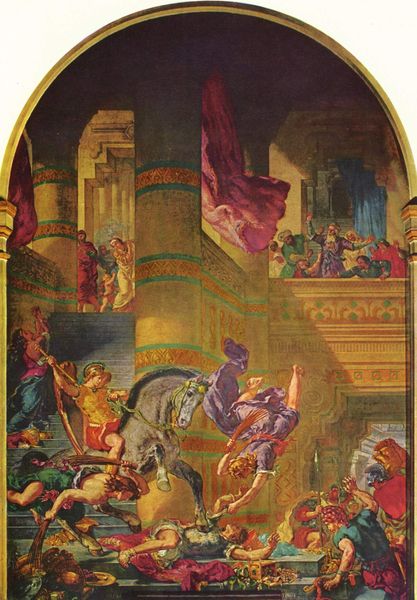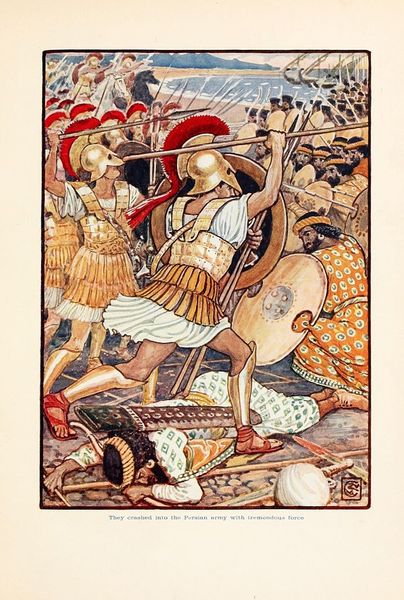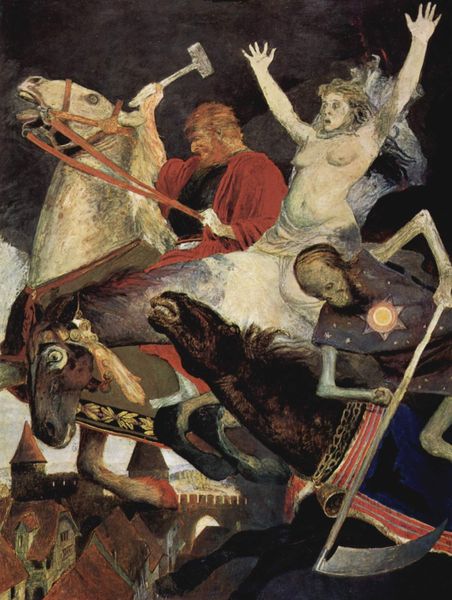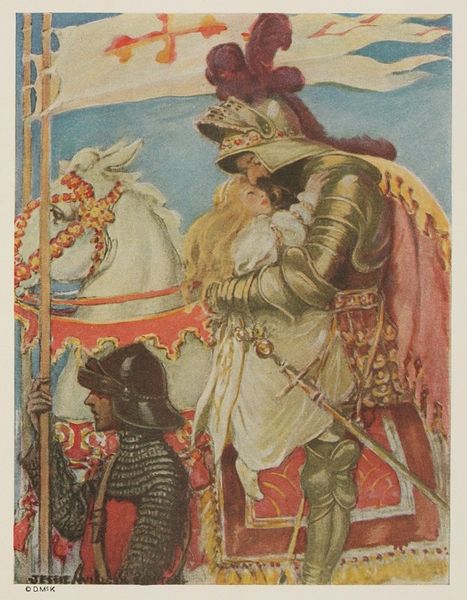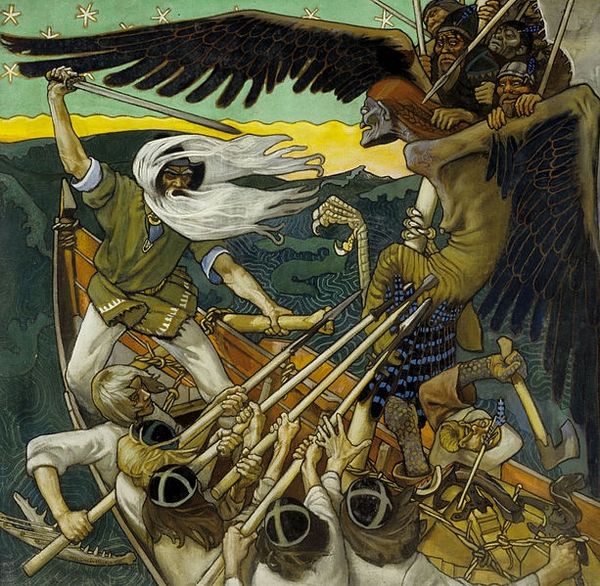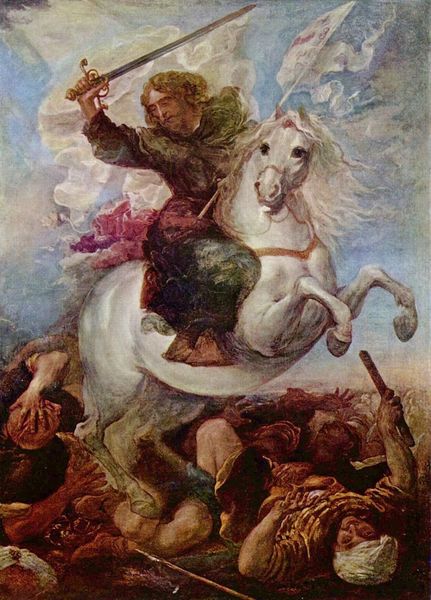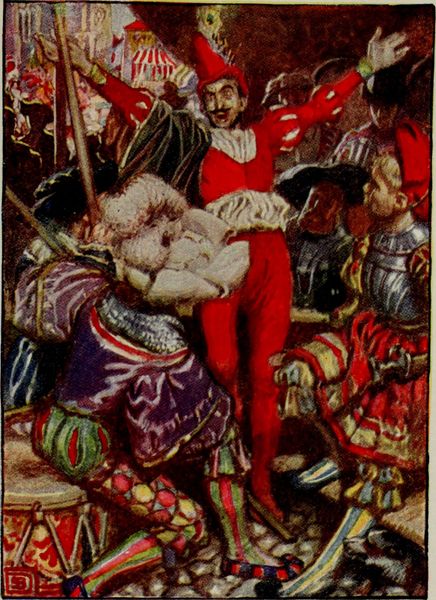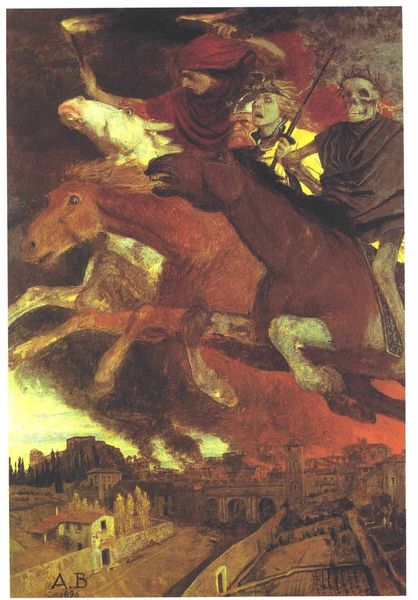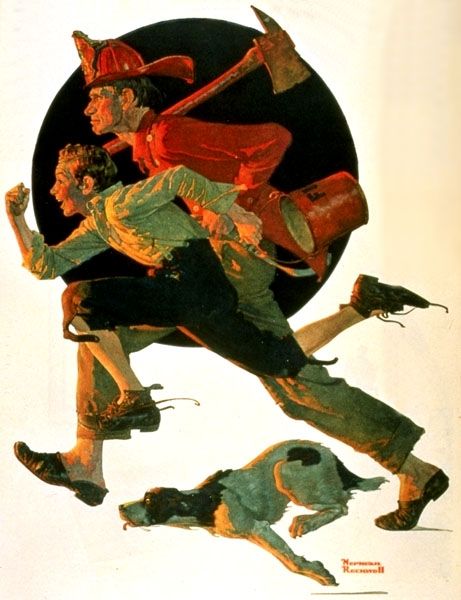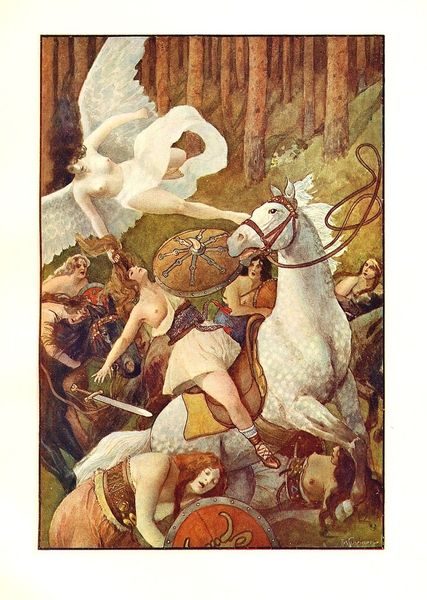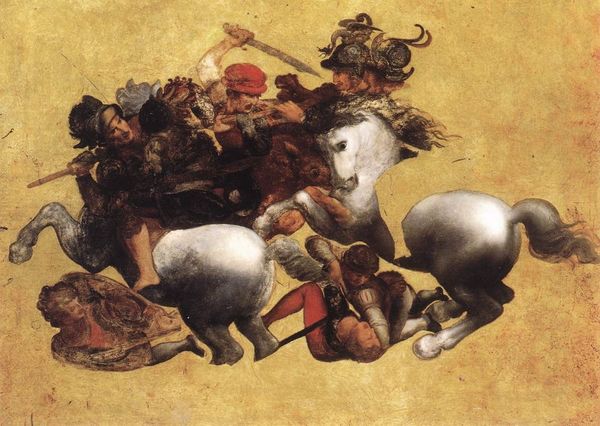
painting
#
portrait
#
art-nouveau
#
painting
#
fantasy-art
#
naive art
#
genre-painting
#
surrealist
#
portrait art
Copyright: Public domain
Curator: This vibrant artwork before us is titled "Cú Chulainn Riding His Chariot into Battle." J.C. Leyendecker created it in 1911. Editor: What strikes me immediately is the overwhelming sense of energy and chaos. The figures are dynamic, almost leaping off the canvas. There is something raw and untamed in this battle scene, quite gripping. Curator: Absolutely. Leyendecker, while best known for his commercial work, frequently drew on historical and mythological narratives to speak to broader cultural anxieties. In this painting, he presents the Irish hero Cú Chulainn. He wasn’t merely illustrating a story but tapping into a romanticized past that carried immense cultural and political weight, particularly in the context of Irish nationalism at the turn of the century. He’s creating a very particular type of hero figure to act as a symbolic rallying cry. Editor: The symbols are definitely layered here. We have the chariot itself, a recurring motif of power and status. Then, there is the raven, an age-old omen—is it a warning, or is it beckoning Cú Chulainn onward, or is it both? The color palette only reinforces these symbolic binaries, employing highly saturated, nearly clashing, reds, yellows, and blacks that add to the drama of the moment. And those weaponized sunbursts along the horses chest that add to the horse's musculature-- what is this symbolism to be, or is the image just intended to reinforce ideas about the subject? Curator: Considering Leyendecker's work in the broader historical and political landscape is crucial, I feel. Early 20th-century nationalism was frequently intertwined with constructed heroic ideals, a deliberate focus on masculine strength and prowess. Here, we see Cú Chulainn depicted as this almost superhuman figure. While we might admire the dynamic composition, it's critical to critically examine its roots in these nation-building ideologies. Editor: Yes, but I also read the figure’s obvious terror in the figure’s face to imply some sort of counter-weight for all of that idealized aggression. Curator: Those tensions make it all the more fascinating. Editor: Seeing the interplay of symbolism, energy, and narrative here has certainly deepened my understanding of how Leyendecker infuses his visual vocabulary. Curator: Agreed. Viewing artworks such as this through an intersectional lens allows us to dissect cultural messages but to also see it in all its compelling and contradictory facets.
Comments
No comments
Be the first to comment and join the conversation on the ultimate creative platform.
